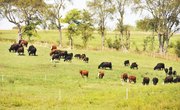
The debate about the superiority of one kind of jacket insulation over another has been ongoing since the first synthetics were introduced in the mid-20th century. Since that time, synthetic insulation materials have come closer and closer to perfect imitations of the real thing, but most authorities agree that the product made from the undercoat of waterfowl is still the standard to beat.
Advantages of Down
Advantages of down from ducks, geese or other waterfowl begin with warmth. Most experts agree that down is still the warmest of all insulating materials. It retains its loft and remains functional for warmth longer than other materials. Down wicks moisture away from the wearer's body and allows it to evaporate. It is more highly compressible and lightweight than other materials.
Disadvantages of Down
Among the disadvantages of down, the fact that it doesn't function as well when wet ranks as one of the biggest. It is also slow to dry once it gets wet. Down requires special cleaning methods whether it is dry cleaned--which is recommended--or washed. It also may be somewhat allergenic because unless down is very specially processed and cleaned, it may contain dust particles. Moreover, down is more expensive than synthetic products.
Advantages of Thinsulate
Thinsulate and most of the other synthetic insulation materials are water-resistant and continue to provide warmth even when wet. Some synthetics actually repel water. They dry quickly as opposed to down's slow drying characteristic, and they can be easily laundered. Because synthetic insulations are not organic, they are hypoallergenic. All synthetics are less expensive than down.
Thinsulate is a particular kind of synthetic, one that is far less bulky than either down or the other synthetics. Some parka-wearers prefer Thinsulate because it makes a much less puffy garment than a down-filled one, and will not interfere with active sports as much as other insulating materials.
Disadvantages of Synthetics
Some synthetic insulating materials are even more bulky than down and are less easily compacted. They are not as warm as down, weigh more and will eventually break down, losing their insulating ability. Less-expensive synthetics may be less flexible than down and cause a jacket to fit poorly.
Down Is Recommended
A down-insulated parka is likely to be the better choice for the outdoor enthusiast who will wear the jacket often and for several years. It will wear very well, keep the wearer warm, weigh less and take up less space when compressed. Down is somewhat more expensive than a Thinsulate parka, but it will provide better satisfaction in the long run.
Synthetic Is Also Recommended
A Thinsulate parka is a more logical choice for children if their climate is not severe, and if they are not involved in winter camping or hiking. It is less expensive and less bulky, easier to wear to and from school in a car or bus, or outdoors for brief play periods. It is water-resistant, an important asset for children in snow or rain. The same recommendation is true for adults who do not plan extensive outdoor exposure such as hiking or camping in winter.
References
Writer Bio
Karen W. Waggoner is a retired teacher and lifetime scribbler. She has published short stories, essays in anthologies and periodicals. Waggoner is the author of the memoir, "On My Honor, A Navy Wife’s Vietnam War." She is a graduate of Stetson University, the University of Connecticut and Christian College for Women.



